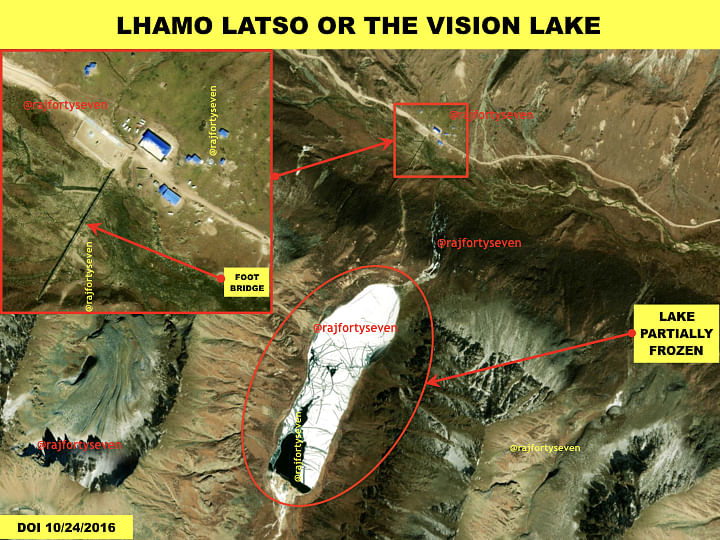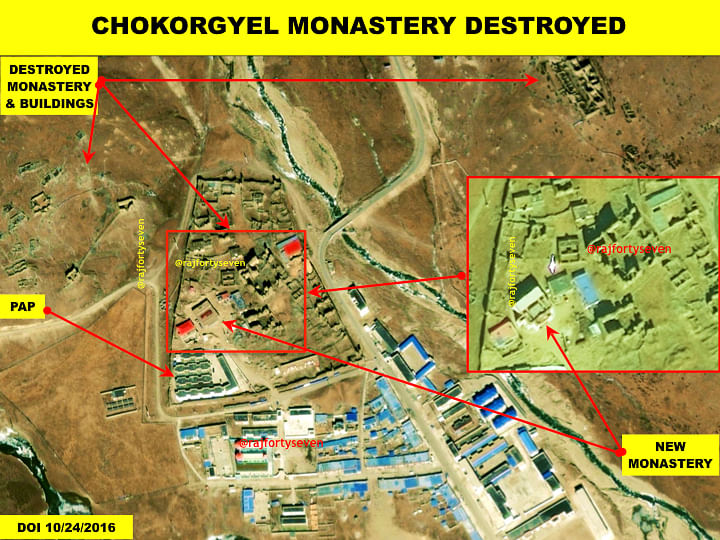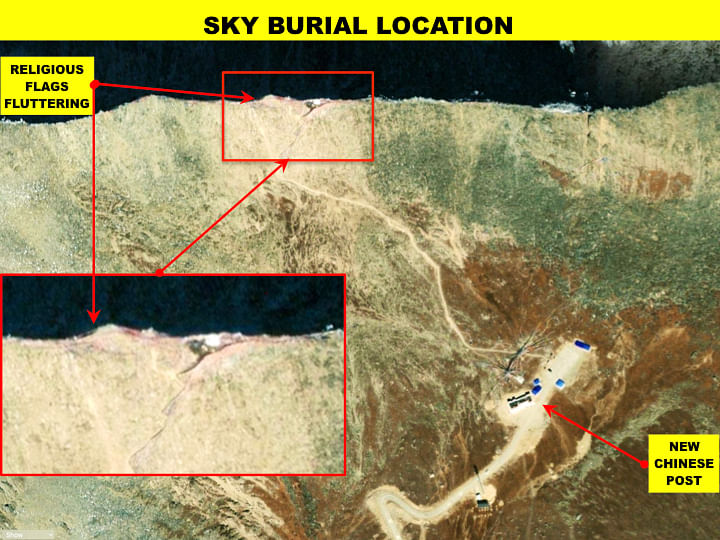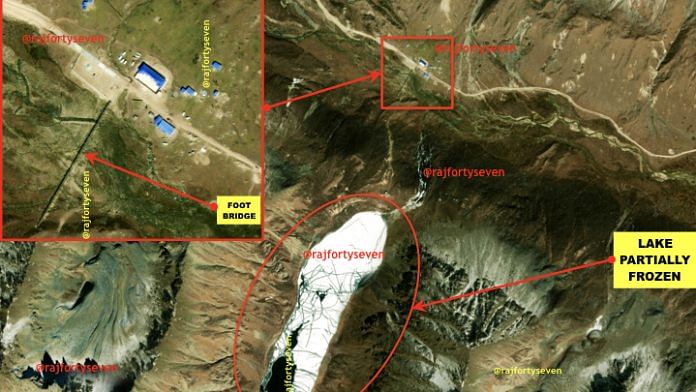China’s control over Tibet and its Buddhist traditions seemingly has a new aim. Construction activity by Chinese authorities near sacred Tibetan Buddhist sites suggests that the government aims to control the movement of Tibetans to these sites, and in turn, play a role in determining the next Dalai Lama.
Recent open satellite imagery suggests that the Chinese government is constructing new monasteries, ‘Gulag’-like perimeter fences, and modern architecture near some of the pious sites.
China’s intrusion into Tibet, the subjugation of its people, and the institutionalised programme to suppress their culture is well known. But the latest activity seems to be specifically targeting sacred Buddhist sites that are directly linked with the mythology regarding the reincarnation of the Dalai Lama.
Chinese authorities seem to be in an immense hurry to establish their own hand-picked Dalai Lama, which would allow them to establish complete domination over Tibetan Buddhists. The current Dalai Lama himself has repeatedly expressed fears that after his death, the Chinese state will most likely appoint a Dalai Lama who helps it achieve its strategic objectives in Tibet.
Not long ago, foreign tourists were banned from visiting the Lhamo La-tso (the holy Oracle Lake). The subsequent visit by the Chinese-appointed Panchen Lama or “Gya Panchen” (the second in hierarchy after the Dalai Lama) indicates growing Chinese interference.
ThePrint takes a closer look to understand this complicated issue.
Also read: China claims it has no ‘Gulags’, but satellite imagery shows 3 new ones coming up in Tibet
Lhamo La-tso
The oracle lake of Gyelmo Makzorma, popularly known as Lhamo La-tso, is one of the most sacred lakes in the U-Tsang region of Tibet. It is situated at a height of 4,930m and spread across 24 hectares.

According to Tibetan mythology, it is believed to depict the wrathful face of the deity Palden Lhamo. Tibetan Buddhists believe that Palden Lhamo’s guardian spirit had promised the 1st Dalai Lama that she would protect the reincarnation lineage of the Dalai Lamas. Thus, it has come to be known as the ‘Vision Lake’.
Since then, many Lamas have meditated at the ‘Vision Lake’, seeking advice and guidance regarding the future Dalai Lama.
Since early 2016, the Chinese PAP (People’s Armed Police) has taken over the lake and its premises.
The construction of permanent barracks near the lake began in late March 2016. The construction has been completed, along with a steel footbridge across the river.
During winters, the lake remains frozen and the PAP post withdraws to the Chokorgyel Monastery area.
Tibet’s trip advisory indicates that today, not only foreign tourists, but even locals are being prevented from visiting the lake or circumambulating it.
Chokorgyel Monastery
The second instance of alleged Chinese intrusion can be seen at the Chokorgyel Monastery.
The monastery was constructed in 1509 by the 2nd Dalai Lama — as a small hermitage for meditating. Since then, it has remained a halting place for many senior Lamas en route to the ‘Vision Lake’.

The Chinese allegedly destroyed major parts of the monastery in 1960s — the wooden structure was removed, and the rest was burnt. Today, merely a small portion of its north-western wall remains.
Satellite imagery very strongly substantiates that the entire Chokorgyel Monastery was completely destroyed, and no efforts have been made to rebuild it.
PAP and its newly-constructed multi-storeyed building occupying the remaining southern portion of the compound. Additionally, there is solar power infrastructure and a communications post nearby.
The walls, as seen today on satellite imagery, indicate that the intrinsic architecture was based on the Buddhist Swastika.
A small monastery-like structure has been recently constructed, replacing the original monastery building. It provides space for meditation, but under the strict and watchful eyes of the PAP.
Also read: China has built second foreign military base near key Afghan corridor — just north of PoK
Sky burial
The third instance can be seen at a site used for sky burials — a practice in which human remains are placed on a mountaintop, to be decomposed by the elements or devoured by scavengers, especially birds.

South of the Lhamo La-tso, at the apex of the mountain, is believed to be the ‘blue residence’ of the deity Palden Lhamo. It also features a burial site, which is used for sky burials.
Satellite imagery shows that this burial site too has been taken over by the PAP. It now features a proper post controlled by PAP, with solar power and a communication node.
The Tibetan religious flags fluttering on the mountain can be clearly seen on open source satellite imagery.






